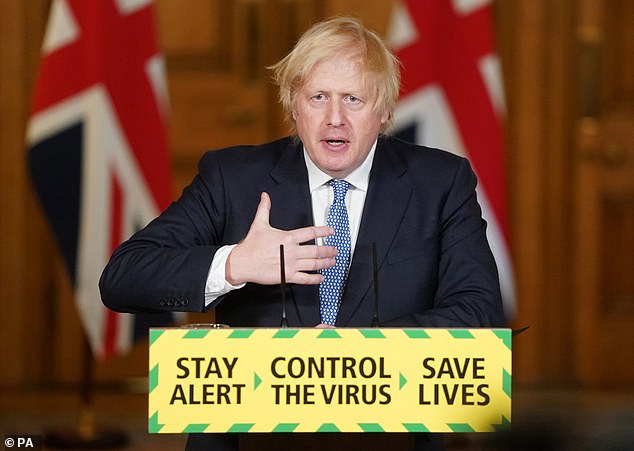People WON’T obey lockdown again: SAGE files reveal scientists warned UK Government to prepare for ‘visible resistance’ to future rule changes and show a THIRD of the public still don’t know the symptoms of Covid-19
The Government has been warned to prepare for ‘visible resistance’ if it tries to bring back lockdown rules in the future, official papers revealed today.
Files from the Scientific Advisory Group for Emergencies (SAGE) show that top behavioural scientists fear people won’t follow the rules for a second time.
They say young people are tiring of social distancing and abandoning the rules, while disagreements about the UK’s approach to Covid-19 mean the public will be less likely to follow advice in future.
Public faith in the Government has dropped since the start of the pandemic and people no longer have the same fear of the virus, the papers cautioned.
The same document revealed that a staggering 35 per cent of people – more than a third – still don’t know that coughing and a fever are the main symptoms of Covid-19.
Another paper revealed that scientists consider public toilets to be one of the highest risk areas for catching the coronavirus. They say using them is riskier than touching door handles in public or using cash machines.
While being within two metres (6’7″) of someone presents the biggest risk of catching the virus, there is still a risk of it transmitting if someone is 10m (32′) away, a report said.
And a third paper said measuring the reproduction rate of the virus – the R – will not be useful now that the outbreak has shrunk, and definitely not on a regional level.
The findings in SAGE papers published today include:
- Behavioural scientists warned trying to reintroduce lockdown rules after lifting them ‘might evoke various responses’ because people disagree over whether they’re necessary;
- Many people ‘lack a basic understanding of Covid-19’ and only 65 per cent can identify the main symptoms, researchers said. They added that people are ‘confused by rapidly changing government guidance and do not fully understand the rationale for it’;
- The coronavirus may be able to spread between people who are 10 metres (32 feet) apart, but the highest risk is when people are within 2m (6’7″) of others;
- A huge study of 64,066 Covid-19 hospital patients in the UK found that 28 per cent of them died. Patients spent nine days in hospital, on average, and 16 per cent needed high-flow oxygen treatment;
- Regional R rate comparisons are not an accurate way of measuring where hotspots are, and the national rate is only vague once case numbers have dropped.
The Government has been warned that they could face ‘visible resistance’ to further lockdown measures and that people aren’t as afraid of Covid-19 as they were in March (Pictured, Prime Minister Boris Johnson at the Downing Street press briefing on July 3)
